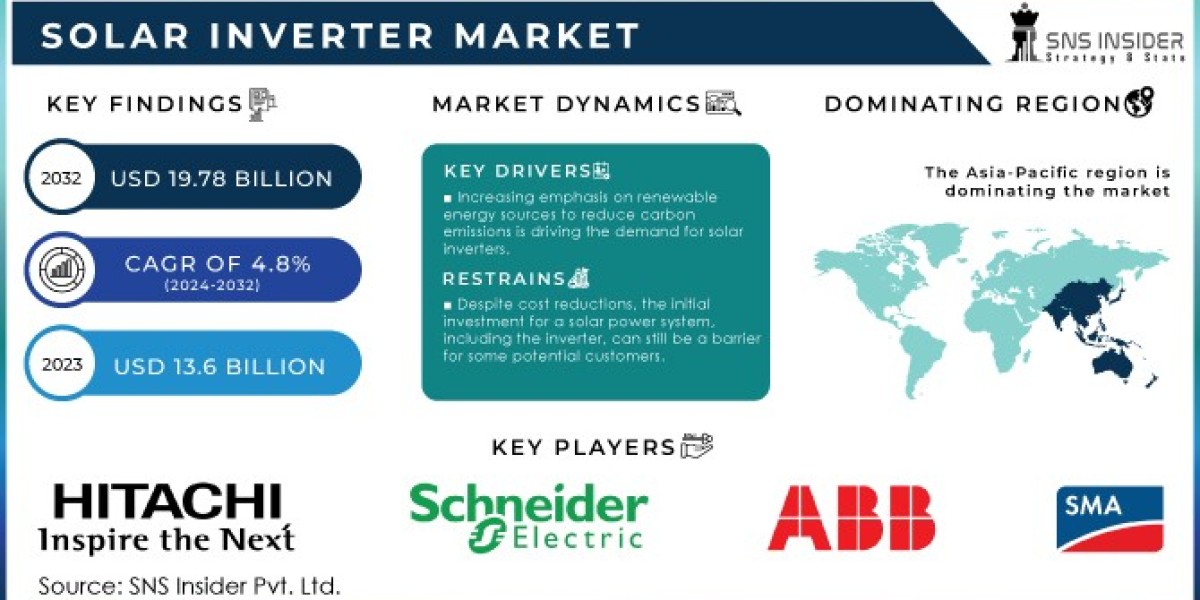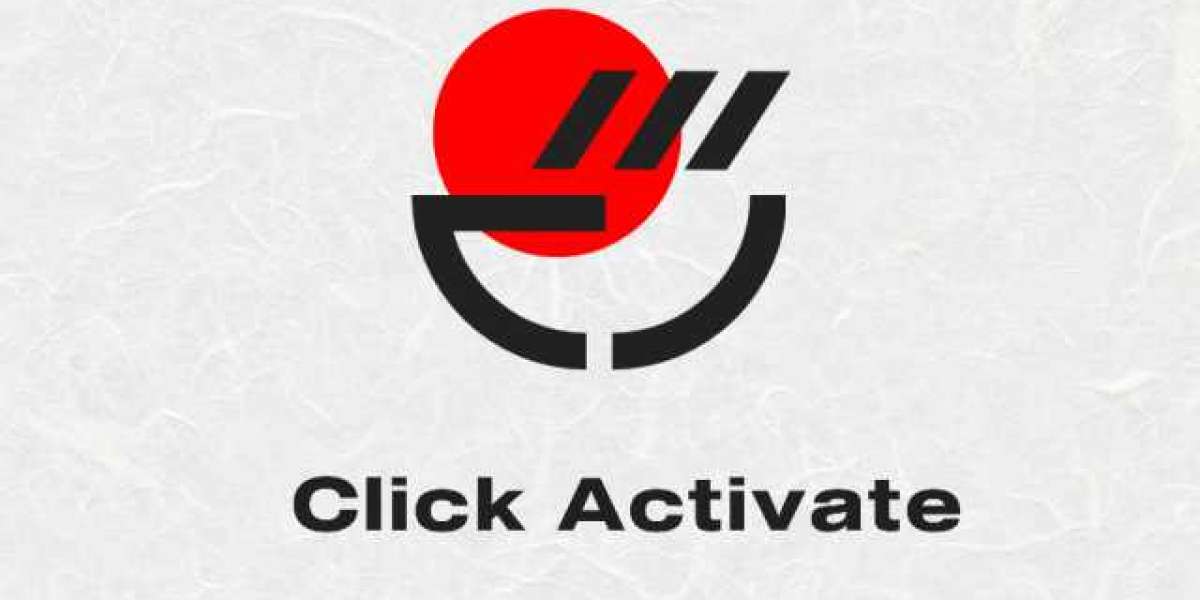Solar inverters are essential to the operation of solar power systems, transforming the DC electricity generated by solar panels into AC electricity that can be used by homes, businesses, and the electrical grid. As the adoption of solar energy accelerates globally, the role of solar inverters has expanded, making them a critical focus of innovation within the renewable energy sector. The Solar Inverter Market Size was valued at $13.6 billion in 2023 and is expected to reach $19.78 billion by 2032 and grow at a CAGR of 4.8% by 2024-2032.
The Evolving Role of Solar Inverters
Traditionally, solar inverters were primarily responsible for converting DC electricity to AC electricity. However, their role has evolved significantly in recent years. Modern solar inverters are now equipped with advanced features that enhance the performance, monitoring, and control of solar power systems. They are integral to ensuring that solar installations operate efficiently and safely, providing features such as maximum power point tracking (MPPT), system monitoring, and grid management capabilities.
One of the most significant developments in the solar inverter industry is the increasing integration of smart technology. Smart inverters, which are becoming more prevalent, are capable of communicating with the grid and other energy management systems. This enables them to perform functions such as voltage regulation, frequency control, and even remote system management, which are crucial for maintaining grid stability as the penetration of solar energy increases.
Key Innovations Driving the Solar Inverter Market
The solar inverter market is experiencing rapid innovation, driven by the need to enhance efficiency, reliability, and functionality in solar energy systems.
- Grid-Tied and Off-Grid Inverters: The choice between grid-tied and off-grid inverters depends on the specific needs of the installation. Grid-tied inverters are designed to work in conjunction with the electrical grid, feeding excess electricity back into the grid and drawing power when needed. Off-grid inverters, on the other hand, are used in standalone systems where there is no access to the grid. These inverters often incorporate battery storage to provide a continuous power supply.
- Hybrid Inverters and Energy Storage Integration: Hybrid inverters are gaining popularity as they allow for the integration of battery storage with solar power systems. This integration is crucial for maximizing the use of solar energy, enabling users to store excess electricity generated during the day for use during nighttime or cloudy periods. Hybrid inverters are also essential for creating more resilient energy systems that can operate independently of the grid during outages.
- Advanced Cooling and Durability Features: The latest solar inverters are being designed with advanced cooling systems that improve their efficiency and lifespan. Effective cooling is essential for preventing overheating and ensuring that the inverter operates at its optimal efficiency. Additionally, manufacturers are focusing on enhancing the durability of inverters, making them more resistant to environmental factors such as temperature fluctuations, humidity, and dust.
- AI and Machine Learning Integration: The integration of AI and machine learning in solar inverters is another significant innovation. These technologies enable inverters to optimize their performance by learning from historical data and adapting to changing conditions. AI-powered inverters can predict potential issues, optimize energy production, and even automate maintenance tasks, improving overall system efficiency and reducing operational costs.
Market Trends and Growth Drivers
Several factors are driving the growth of the solar inverter market, including the increasing adoption of solar energy, technological advancements, and supportive government policies.
- Rising Solar Energy Adoption: The global push towards renewable energy is leading to a surge in solar installations across residential, commercial, and industrial sectors. As more solar panels are installed, the demand for efficient and reliable inverters is expected to grow, driving market expansion.
- Technological Advancements: Continuous innovation in solar inverter technology is making these devices more efficient, reliable, and versatile. Advances in materials, electronics, and software are enabling the development of inverters that can handle more complex energy systems and provide advanced grid support functions.
- Government Policies and Incentives: Many governments around the world are implementing policies and incentives to encourage the adoption of renewable energy. These policies often include subsidies, tax credits, and other financial incentives for solar installations, which in turn boost the demand for solar inverters.
- Increasing Focus on Energy Storage: The growing interest in energy storage solutions is another key driver of the solar inverter market. As more consumers and businesses look to integrate battery storage with their solar systems, the demand for hybrid inverters is expected to rise. These inverters allow for seamless integration of solar power and battery storage, providing greater flexibility and reliability.
Challenges in the Solar Inverter Market
Despite the positive growth outlook, the solar inverter market faces several challenges. One of the primary challenges is the variability of standards and regulations across different regions. This can complicate the design and deployment of solar inverters, as manufacturers must ensure compliance with a wide range of local requirements.
Another challenge is the need for inverters to keep pace with the increasing complexity of solar power systems. As solar installations grow in size and complexity, inverters must be able to manage multiple energy sources, integrate with battery storage, and provide advanced grid support functions.
Finally, the cost of solar inverters, while decreasing, remains a barrier for some potential users. The initial investment required for high-quality inverters can be significant, especially for residential users. However, as technology advances and production scales up, it is expected that costs will continue to decrease, making solar inverters more accessible to a broader range of consumers.
Conclusion
Solar inverters are a crucial component of any solar power system, playing a key role in the conversion, management, and optimization of solar energy. As the solar energy market continues to grow, driven by technological advancements and increasing adoption of renewable energy, the demand for efficient and reliable solar inverters is expected to rise. The future of the solar inverter market looks bright, with continuous innovations poised to enhance the performance and integration of solar power systems, making them more accessible and effective for users around the world.
About Us:
SNS Insider is one of the leading market research and consulting agencies that dominates the market research industry globally. Our company's aim is to give clients the knowledge they require in order to function in changing circumstances. In order to give you current, accurate market data, consumer insights, and opinions so that you can make decisions with confidence, we employ a variety of techniques, including surveys, video talks, and focus groups around the world.
Contact Us:
Akash Anand – Head of Business Development & Strategy
Phone: +1-415-230-0044 (US) | +91-7798602273 (IND)



